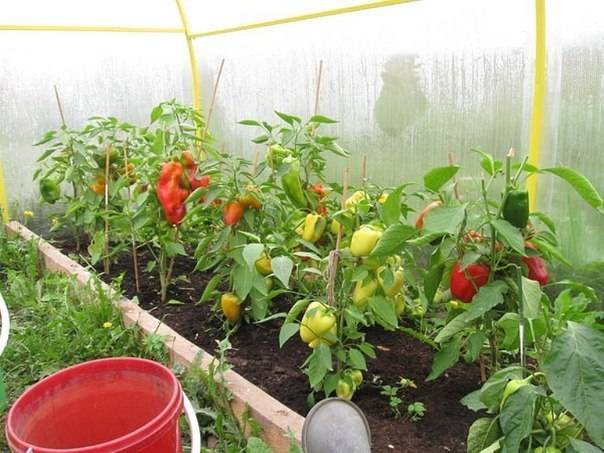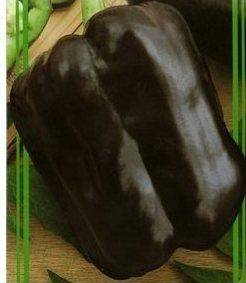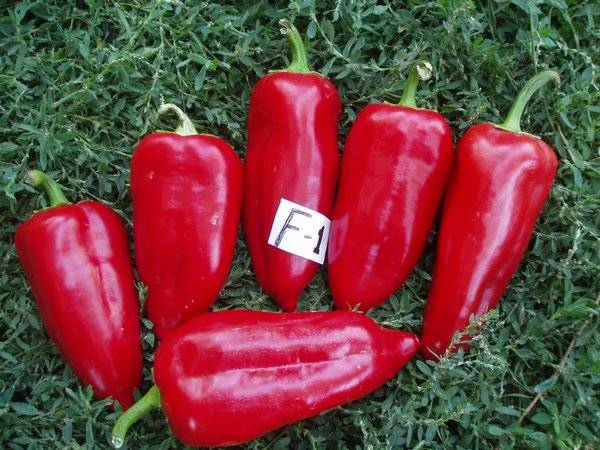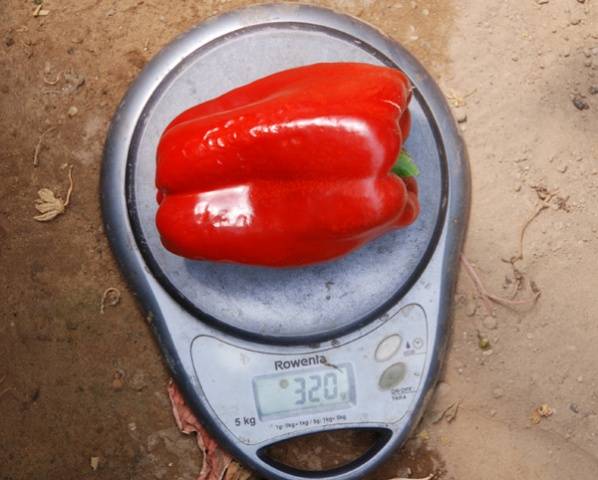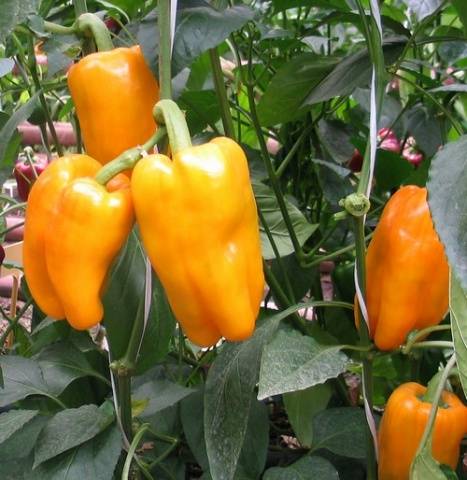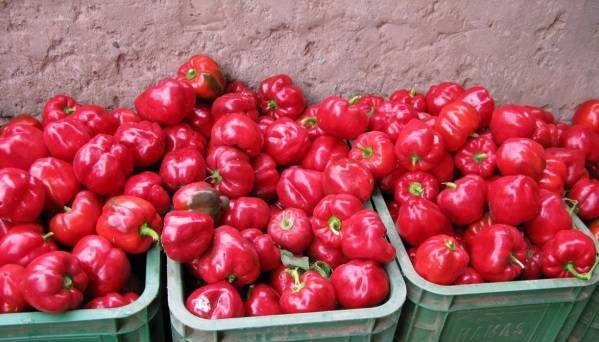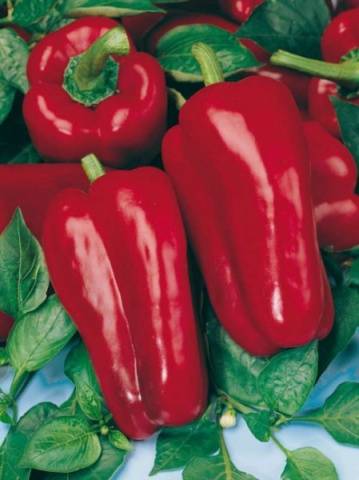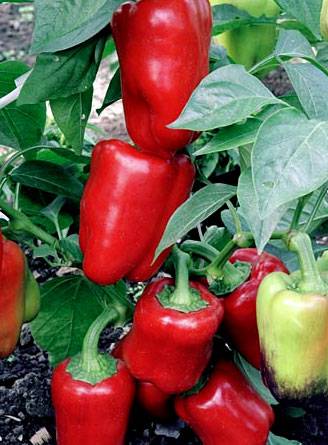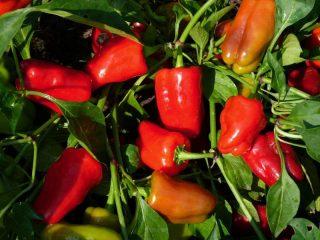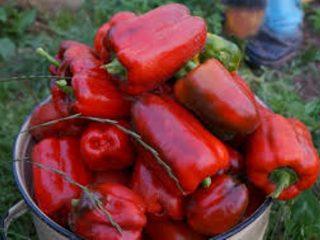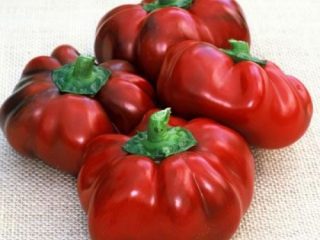Content
Sweet peppers are extremely heat-loving plants, which is not at all surprising, given that they come from the warmest and most humid regions of Latin and Central America. Despite this, domestic gardeners have long learned to obtain good yields of this crop in Russian conditions that would seem to be completely unsuitable for this. Moreover, this statement applies not only to the southern regions. Consistently high yields are also obtained in central Russia, but this requires growing pepper in protected soil, which is why most gardeners prefer to plant pepper seeds as seedlings, which are then planted in greenhouses.
Sweet pepper - properties and benefits
Sweet peppers are one of the annual vegetable crops. The plant in Russia is known under several names, for example, red pepper, bell pepper, vegetable pepper and paprika. The sweet pepper bush, as a rule, has single or rosette leaves of a characteristic green or bright dark green color.The vegetable has fairly large fruits, which are false hollow berries of various and bright colors: red, green, yellow, orange or brown.
Having eaten a vegetable quite often, a person usually does not think about its beneficial properties. And there are actually a lot of them, and some of them deserve special mention:
- traditional for many vegetables, a high content of beneficial vitamins and other substances. In terms of the content of extremely useful vitamin C, sweet peppers are far ahead of all other vegetables, being the undoubted leader. Among all the plants, only rose hips and black currants are slightly superior in this component. What stands out is the rare vitamin P contained in bell peppers. It is very useful for normalizing the functioning of the heart and blood vessels. According to scientists, constant consumption of pepper almost halves the likelihood of having a stroke. In addition to those listed above, sweet peppers also contain many other useful substances, from B vitamins to silicon, iron, etc.;
- presence of the original and uncommon substance capsoicin. It helps increase appetite and activate processes associated with digestion. Therefore, it is highly recommended to take the vegetable in any form at the beginning of lunch or dinner. Distant relatives of sweet peppers - black pepper and hot chili - contain even more capsoicin;
- healing effect. Some of the beneficial and therapeutic and prophylactic properties of the vegetable crop in question have already been listed above.In addition, regular consumption of bell peppers very significantly reduces the risk of any cancer, primarily breast cancer, which makes the vegetable preferable for women. Also, substances found in pepper help prevent neuralgia;
- excellent taste properties. You can list the beneficial, medicinal and health-improving qualities of pepper for as long as you like, but all this would not be so important for its popularity and wide distribution if it did not have a wonderful taste and was not part of many varied, but invariably delivering gastronomic pleasure dishes.
As can be seen from the above, it is not at all difficult to explain why sweet peppers are grown in almost every domestic garden.
How to choose the best variety of sweet pepper
Experienced gardeners know very well what to look for when choosing a variety. For beginners, the following main criteria can be distinguished:
- ripening time of the variety or hybrid sweet pepper. Proper planning of sowing dates often allows you to obtain a plant harvest when it is grown in the most suitable polycarbonate greenhouses until mid-winter;
- bush height vegetables and their compactness. The larger the area of the greenhouse, the less relevant this criterion is. However, proper planting and placement of the plant requires taking this factor into account;
- amount of light needed. This indicator varies greatly among different hybrids and varieties of sweet peppers. When choosing them, it is necessary to take into account the characteristics of the region in which it is planned to grow bell peppers;
- resistance and ability not to succumb to pest diseases. The most important criterion that must be taken into account when choosing a variety or hybrid. You should also have information about which diseases and pests are most common in the region where you plan to grow vegetables.
Variety or hybrid
The importance of this criterion requires its separate and more detailed consideration. It is especially relevant for gardeners who try to use seeds collected on their own.
They must understand that in the case of planting seeds of a bell pepper hybrid marked F1, self-harvesting of seeds is impractical, since such hybrids produce seeds without inheriting the characteristics of the variety. Hence the conclusion: if you want to grow such fruitful and tasty hybrids, you will have to purchase seeds every year. A fairly large part of gardeners go for this, since the advantages of hybrids are obvious and demonstrable: extremely high and stable yields with excellent taste properties, as well as often higher resistance to diseases than conventional varietal bell peppers.
The best varieties of sweet peppers for greenhouses
To answer the question of which varieties of peppers are the best for a greenhouse, just study their properties given below and choose the most suitable one.
Cardinal F1
Based on the presence of markings, it is easy to determine that the Cardinal sweet pepper is a hybrid. It is a high-yielding plant, early ripening. Allows you to get the first fruits within 86-97 days after planting the seedlings. The vegetable has a low (0.5-0.6 meters) bush with a compact structure. The fruits of bell pepper are cube-shaped, quite large, overall dimensions are 9*10 cm, the wall thickness reaches 8 mm.The peppercorn has an extremely attractive appearance, with a dark purple color at the stage of technical maturity, gradually turning into bright red when fully ripe. A huge advantage of the hybrid is its very high resistance to the common tobacco mosaic virus.
Experts also highly appreciate the taste properties of the Cardinal F1 hybrid. Most of them recommend starting sowing seeds for seedlings in March. Like most hydride seeds, Cardinal pepper seeds do not need to be soaked or otherwise prepared for planting.
Atlant F1
Sweet pepper Atlant It is also a hybrid, which is easy to determine from the markings. He is rightfully considered one of the most popular and famous among domestic gardeners. The reasons for this are the extraordinary characteristics inherent in the hybrid. These are both high taste properties and extremely attractive appearance - bright red fruits that stand out against the general background. The hybrid vegetable crop is considered universal, that is, the fruits can be eaten in any form.
The Atlant hybrid is an early ripening variety, allowing you to start harvesting in 110-115 days. In addition to the listed advantages, it also has sufficiently high resistance to diseases that are most common in domestic conditions.
Hercules
Sweet pepper Hercules belongs to the mid-season, allowing you to start collecting the first fruits 120-130 days after the appearance of the first sprouts. At this time, the fruits are dark green in color, but after 20-25 days, when they reach biological maturity, they turn red.
The peppercorns are cube-shaped, measuring 12*11 cm, quite large, their weight reaches 250 grams. There is barely noticeable ribbing on the surface.The walls of the fetus have a normal thickness of 7-8 mm. The high taste qualities of the variety are preserved with any method of preparation and fresh in salads.
The Hercules sweet pepper variety is highly resistant to most diseases and is relatively unpretentious to growing conditions.
Apricot favorite
A popular and well-known variety was obtained by Russian breeders at the end of the 20th century. Since then, it has spread widely throughout domestic territories due to the presence of a number of advantages. Sweet pepper Apricot favorite is an early ripening crop, allowing harvesting to begin in 100-110 days. The vegetable bush is small in size and quite compact, has a significant number of relatively large leaves of a dark green color.
The peppercorns have a prism-shaped shape, smooth with slightly visible ribbing. They are small, rarely weighing more than 120 grams, with a typical wall thickness of 7-8 mm. The main advantage of the variety is its high yield, reaching 9.5-10.3 kg/sq. m. In addition, sweet peppers are highly resistant to most common diseases and pests. In addition, the variety has high taste properties, which are often valued by gardeners even higher than yield. The variety is most common as a greenhouse variety, but can also be grown in open ground.
Latino F1
The sweet pepper hybrid is an early ripening plant; after 100-120 days it is quite possible to begin harvesting. The hybrid is characterized by extremely high productivity, which makes it stand out even among bell pepper hybrids. Subject to agrotechnical rules and quality care, it may well exceed 16 kg/sq. m.The peppercorns of the Latino hybrid have a characteristic cuboid shape of a fairly large size of 12*12 cm with a wall thickness that exceeds the usual for most peppers and reaches 1 cm. The color of the fruit is clearly red.
Bred for growing in greenhouses, the Latino hybrid can also be planted in open ground, which is often done by gardeners in the southern Russian regions. In addition to yield, the bell pepper hybrid is extremely resistant to various common diseases. Although it needs protection and protection from pests - aphids and spider mites.
Denis F1
This hybrid is an ultra-early one, starting to bear fruit after 85-90 days. The plant has relatively large fruits, reaching a usual weight of 0.4 kg with fairly thick walls of 0.9 cm. The shape of the fruit is cuboidal, but somewhat elongated. The overall dimensions are impressive - 18 * 10 cm. The vegetable bush is medium-sized, rarely reaching a height of 0.6-0.7 m. The Denis hybrid is well cultivated both in open and closed ground, in the second case its productivity is, for obvious reasons , significantly higher. Experts recommend it as ideal for salads, although other methods of consumption are also possible.
Isabella F1
The hybrid bell pepper Isabella is medium-sized, bearing the first fruits suitable for harvesting after 120 days. The vegetable bush is relatively tall, often exceeding 1 m. The fruits of the hybrid are relatively large in size, weighing up to 160 grams with a typical wall thickness of 8-10 mm. The shape of the peppercorns is prism-shaped, the color is characteristic bright red.
It is most valued for its excellent taste properties, and is universal, that is, it can be eaten in any form, including canned. The yield of the Isabella hybrid reaches 10 kg/sq.m. m. It is also worth noting that the sweet pepper hybrid is extremely unpretentious and undemanding in terms of growing conditions and care.
Conclusion
Any gardener who decides to grow sweet peppers faces a difficult dilemma - which variety is best to choose for planting. Making a choice is actually not easy, since there are hundreds of different varieties and hybrids of sweet peppers on the market. However, such diversity guarantees that everyone will find the most suitable option for themselves in order to be able to take advantage of the tasty and extremely healthy fruits of the sweet pepper vegetable crop.
